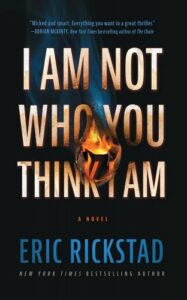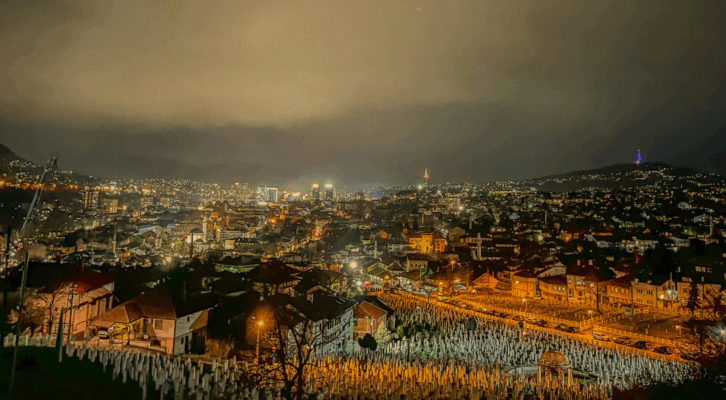There are many events and books that inspired I Am Not Who You Think I Am, from Dennis Lehane’s tragedy Mystic River and his psychological thriller Shutter Island, to my watching a barn burn to the ground one dark night as a kid.
But for the deep gothic atmosphere and the unrelenting psychological disturbance that permeates my new novel, I found the greatest inspiration right outside my kitchen window, a view of a mountain known for its unsolved disappearances and a legendary ghost town—Glastenbury Mountain, or what I call Shirley Jackson and Donna Tartt Country.
It is this mountain where Jackson and Tartt, two of the world’s greatest gothic writers, drew much of their own inspiration. And it’s in this mountain’s shadow where both women lived and wrote the most famous of their classic works.
Glastenbury Mountain is a remote wilderness, and settlement of it seems to have been cursed. Its population peaked at 210 in 1880 when its trees were cut to make into charcoal for the regional iron industry. After the trees were cut, the town fell into decline. In 1889, with the railroad tracks from the lumbering still in place, an impressive inn and hotel were built to attract visitors from New York City and Boston. But that first spring, the tracks were wiped out by spring floods. The buildings and town were abandoned for good.
In just five years, from 1945 to 1950, four people disappeared on Glastenbury Mountain. Their disappearances are a complete mystery, spawning all sorts of rumors that include that of a reclusive murderer living in the woods. Over time, the mountain’s strange reputation has grown, to be included in Aaron Mahnke’s podcast “Lore” and the Travel Channel’s “Unnatural World.”
Jackson’s 1951 novel Hangsaman, about a young woman, Natalie Waite, who descends into madness while at a northeastern college, was inspired, in part, by Paula Welden, a sophomore at Bennington College, where Jackson’s husband Stanley Hyman taught. Welden, just 18 years old, disappeared on December 1, 1946 while hiking Glastenbury Mountain. She was never seen again.
Jackson got the idea for The Lottery while strolling her toddler daughter home from running errands at Powers Market in North Bennington, which I drive past almost weekly. By the time Jackson returned home from the market, the idea for The Lottery was cast in her mind. In an interview, she said, “I had the idea fairly clearly in my mind when I put my daughter in her playpen and the frozen vegetables in the refrigerator.”
It is Glastenbury Mountain that I conjure in my mind when I see Bunny murdered in The Secret History. It is this mountain that I believe inspired Mount Cataract. If it is not Glastenbury Mountain then it is one of the others that surround the wilderness valley where I now live and write. But what better mountain than the one known for its unsolved disappearances and rumors of murder?
I am surrounded and inspired by the same old gothic homes, concealed in the dark New England woods, that inspired Jackson and Tartt. Some of these houses are abandoned. Some are seasonal homes that hardly see a soul. They are the types of places where the pivotal bacchanal scene takes place in The Secret History. Indeed, I am surrounded by The Secret History. The pub that inspired the Boulder Tap bar; the bombed-out old mill buildings; the Battenkill River that flows a half mile from me and I fish often; the defunct greyhound track in Pownal whose grandstands sit forgotten and haunted and reclaimed by nature; the warehouse where Richard almost freezes to death during Christmas break; the Catamount Motel; and so much more—they all still exist. Everywhere I turn, there is The Secret History, there are the ghosts of Richard, Julian, Camilla, Charles, and of course poor Bunny.
During the writing of I Am Not Who You Think I Am, I soaked up these dark, haunted, gothic surroundings, these deep woods and derelict railroad tracks and forsaken buildings. I soaked up the works of Jackson and Tartt, too, and made Wayland Maynard, the protagonist, a big fan of Jackson, who is mentioned in his first paragraph of the novel.
In writing I Am Not Who You Think I Am I took to regularly driving by Jackson’s house, by the store where she shopped, and by the restaurant she ate at, where her husband died of a heart attack five years after Jackson’s early death.
I took to taking the route she walked from Powers Market to her house.
I took to sitting at the train station across the street from her house and writing parts of the novel in my notebook, within 100 feet of where the great Shirley Jackson wrote The Haunting of Hill House, Living with the Savages, Raising Demons, “The Lottery,” and dozens of short stories.
I took to hiking up around Glastenbury Mountain, too. I hiked up there with my kids and my wife, up toward where there is nothing left of the old hotel and inn. Time and nature have swallowed up the structures. But it cannot swallow up the stories, the lore, or the ghosts of this area, nor the legacy of Shirley Jackson works or Donna Tartt’s classic debut novel. In fact, these woods and small towns where I live give new life to new stories. They continue to inspire books and stories full of ghosts and murder and madness. One of those books is I Am Not Who You Think I Am, thanks in part to Jackson and Tartt, who before me were inspired by the same strange mountain I can see right now as I look out my window.
***


















